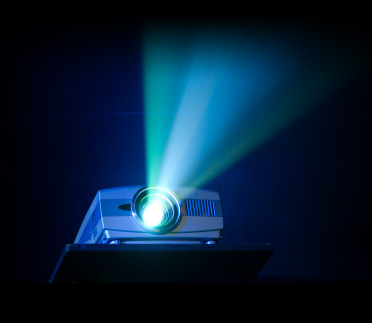Green Projectors
Interview with Chuck Collins, VP of Commercial AV, DPI
 What makes a projector green? What makes a projector green?
Well, I think what makes a projector green is a variety of things, and foremost is probably consumption of power per lumen output. Second would be the materials that make up the projector’s internal components and chassis, as some materials are more recyclable than others. A third component would be long-term cost of ownership, as it relates to replacement parts and how efficiently the projector operates throughout its life cycle.
Do you see a lot of activity by other manufacturers in greening their large-venue projectors?
DP’s traditionally focused on large venue, and I would say in the old days that was about 8,000 lumens and up, and now it’s about 10- 15,000 and up, and we’ve always had a large variety of projectors in that market. Probably the most popular chassis in our product line is the 3-chip TITAN, and it was developed from day 1 with efficient materials and operation in mind. We’ve always believed in minimum wattage in and maximum lumens out. We still have some large-venue projectors that use Xenon lamps, and those are very very bright but short-lived lamps that are also very expensive, we have those in our product line at the upper end, but we switched over to metal halide a few years ago because they’re so much more efficient: they last longer and they’re a lot less expensive, and through some optics and some circuitry in our projectors, we can mimic the attributes of Xenon, but with the efficiency and affordability of metal halide. As far as other manufacturers, I think I can’t really speak for them, but we have noticed that our competition is starting to talk Green as well. DP was founded on creating efficient precision displays, long before efficiency was a priority. But the fact that every manufacturer is now discussing green initiatives is only a good thing for the industry at large.
What kind of things do you see them doing to green their projectors?
Some have followed our lead and switched lamp technologies, but few to none have supplied a comprehensive review of their overall recyclability and efficiency. We feel it’s important to be open and transparent in regards to the energy consumption and performance of our displays, as well as the construction materials we use. Of course, we’re very proud of how advanced our projectors are, so it’s an easier conversation for us than others. For example, early last year we published a comparative projector efficiency analysis based on the published specs of a few of the top projector manufacturers. We then followed this in Q2 of this year with a comprehensive recyclability overview for our products, where we found that the TITAN and LIGHTNING chassis, our large-venue chassis, are 95 percent recyclable. We’ve also just released a fully-automated cost of ownership calculator, available to the public, allowing anyone to figure the TRUE cost of ownership of any display as long as they have a bit of core information about the product. So not only the projector cost, not only the lamp cost, but the amount of power the projector is going to pull, consume, and cost. By setting our efficiency initiatives so high, we’re hopefully going to influence other less efficient manufacturers, leading by example.
Is there also anything being done on the manufacturing end, such as using recycled materials or monitoring carbon footprints or anything like that?
From our shipping containers to the tiny plastic connectors in our displays, we’re constantly analyzing how we can incorporate more recycled and recyclable products on every level of our manufacturing process.
Where do you see the large-venue green projector market going in the future?
Everybody is going to work on a more efficient method, and it’s not just a patriotic thing or to increase market-share sales type of deal, but I think we’re developing lower-cost alternatives to illumination. LED light, while it’s not the most efficient lighting method right now, I think in the near future it could be. Right now an LED will last 60,000 hours, so from that point of view, you’ll never have to replace a lamp again, which is great for the environment: no more Xenon gasses, no more metal halide gasses, or any of that. But it’s not as bright as we need it to be. Once it’s as bright as we need it to be, it’s going to be a complete package as far as greenness: it doesn’t use as much power; it doesn’t produce as much heat, so the room that the projector’s in doesn’t need to be as air conditioned. There’s all kinds of plusses to the technology, but right now it’s just not bright enough. But I absolutely see that happening in the future. When, I couldn’t tell you. But believe me, everybody’s working on the efficiency of lamps and greater efficiency of lenses as well, so they pass more light so you need less lamp in the first place.
|
